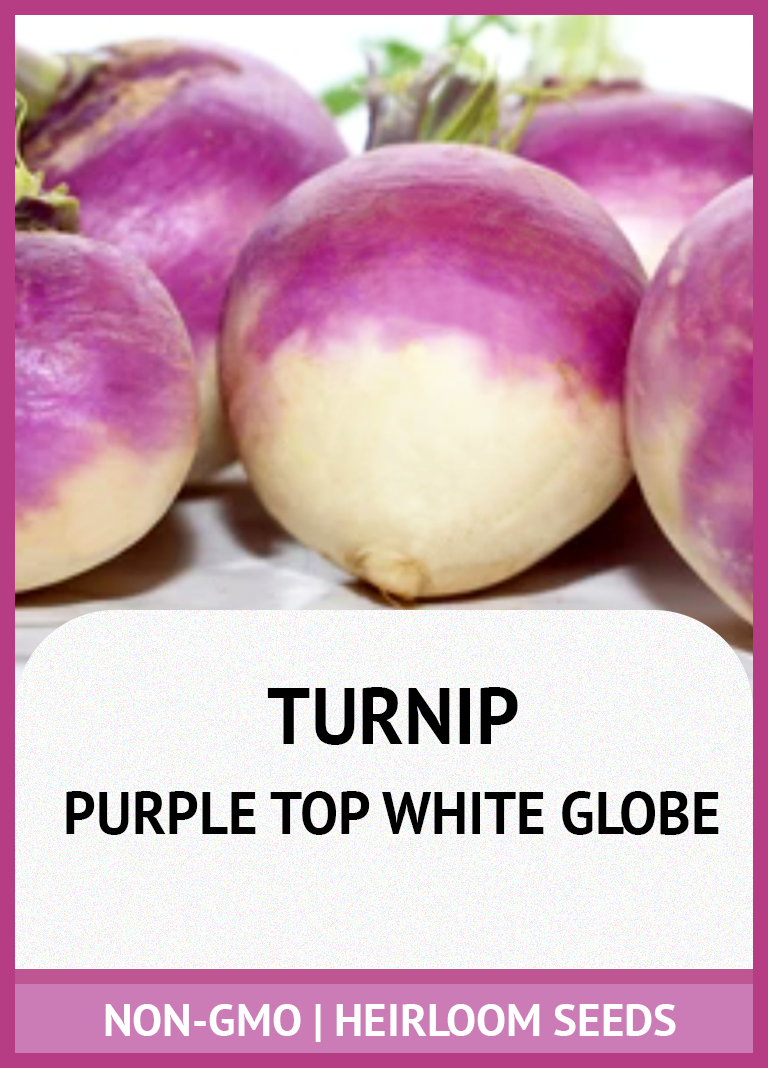Latin Name: Brassica rapa
Type: Open Pollinated, Heirloom, Cool Season
USDA Zones: 3, 4, 5, 6, 7, 8, 9, 10, 11, 12
Seeds per Ounce: 10,000
Planting Method: Direct Sow
Sunlight: Full Sun, Part Sun
Height: 24 Inches
Color: White, Purple
Purple Top White Globe turnip seed is the most popular and widely grown turnip variety worldwide! The tops of this versatile vegetable can be cooked as greens, and its edible roots are good for storing, canning, and freezing! The flesh is sweet, mild, and fine-grained. The globe-shaped roots, which are purple above ground and white below ground, are best harvested when 4" in diameter. It matures in 55 days.
Purple Top White Globe turnip seed has been growing in American gardens since the early 19th century; this variety established itself as one of the most popular turnips for both home and commercial growing. The 1881 D. M. Ferry seed catalog says that turnip is "of beautiful appearance, of most excellent quality, and equally desirable for table or stock."
GROWING INFORMATION
Sowing:
A cool weather crop, turnips thrive when planted three weeks before the last frost in the spring, or after the hottest part of summer for a fall crop. Direct sow Purple Top White Globe turnip seeds in rich, deeply worked soil and full sun, 1/2" deep in rows 12-18" apart; as the seedlings grow, thin them to 4-6" apart.
Growing:
Apply mulch to conserve moisture and control weeds. Watch out for pests such as the red and black harlequin bug, which must be removed to prevent damage.
Harvesting:
Harvest greens as soon as they reach a good size for eating; if using both the greens and the root, harvest only 2-3 leaves per root. Since small turnips have the most tenderness and flavor, pull them when they reach a size of 1-3". To store them for extended periods, cut the top down to 1/2" and store in a cool, dark place without washing off the dirt. Gardeners with warmer winters will be able to apply a layer of mulch and leave the crop in the ground all winter. Purple Top White Globe turnips store very well.
Seed Saving:
Turnips will cross pollinate with other varieties of turnips, and should be isolated to ensure genetic purity. This vegetable must overwinter before producing seed. In warmer climates, a layer of mulch will be sufficient for protection. In colder climates, dig up the turnips; cut the tops to 1" and store them in damp sand at 33-40 degrees F until replanting in spring. The roots will send up flowering stalks. When the seed pods begin to turn brown, remove them before they shatter or dig up the entire plant and hang it upside down in a protected location to dry. Thresh the seed from the dry pods by crushing them. Store the seeds in a cool, dry place for up to 4 years.

